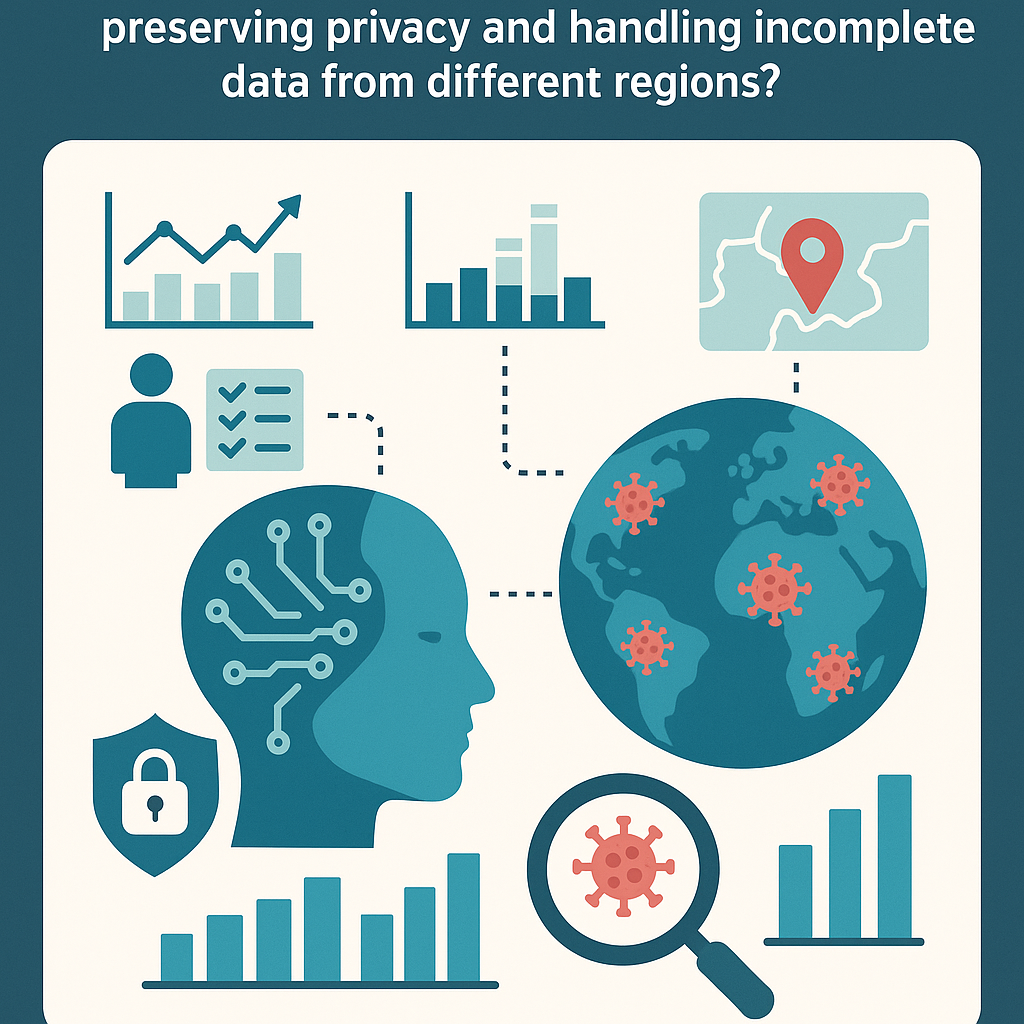The global impact of pandemics underscores the critical need for advanced, proactive health monitoring solutions. Artificial Intelligence (AI) presents a transformative opportunity to revolutionize early detection and prevention efforts by analyzing vast public health datasets. However, challenges such as maintaining data privacy and managing incomplete data from diverse regions must be thoughtfully addressed.
1. AI and Pandemic Surveillance
AI-driven models can swiftly identify unusual patterns indicative of emerging pandemics through analysis of:
- Social Media Trends: Sentiment analysis and keyword detection on platforms like Twitter and Facebook.
- Clinical Reports: Automatic aggregation and assessment of medical records.
- Mobility Data: Analyzing anonymized travel patterns to forecast spread.
- Environmental Data: Correlating environmental factors with disease outbreaks.
2. Privacy Preservation
Handling sensitive health data necessitates stringent privacy protections. AI methodologies to ensure privacy include:
- Federated Learning: Training AI models across multiple decentralized servers, allowing data to remain local.
- Differential Privacy: Injecting random noise into datasets to prevent identification of individuals while retaining statistical accuracy.
- Secure Multi-party Computation: Enabling analysis across multiple organizations without revealing underlying data.
3. Addressing Incomplete Data Challenges
Data incompleteness from various regions can hinder effective surveillance. AI solutions include:
- Data Imputation Techniques: Using machine learning to predict and fill gaps in data based on regional historical trends and adjacent locations.
- Synthetic Data Generation: Creating realistic, privacy-compliant artificial datasets to supplement insufficient real-world data.
- Robust Predictive Modeling: Designing models resilient to incomplete datasets by integrating probabilistic frameworks and uncertainty quantification.
4. Global Collaboration and Data Integration
For AI systems to effectively predict pandemics, global cooperation is essential:
- Standardized Protocols: Developing international standards for data collection, formatting, and sharing.
- AI-driven Integration Platforms: Employing AI to harmonize data from diverse healthcare systems, facilitating rapid global analyses.
- Transparency and Trust: Establishing clear guidelines for data governance and accountability to encourage participation from nations hesitant to share sensitive data.
5. Real-world Applications and Successes
Several initiatives demonstrate AI’s capability:
- BlueDot AI: Successfully flagged the COVID-19 outbreak through analysis of global travel and health data before WHO declarations.
- Google Flu Trends: Utilized search data for real-time influenza monitoring.
6. Future Directions
Advancing AI’s role in pandemic prevention requires:
- Continuous Algorithm Improvement: Regular updating and refining of AI models using real-time feedback loops.
- Capacity Building: Providing global AI training and infrastructure support, especially in resource-constrained regions.
- Policy Frameworks: Developing regulations that balance innovation, privacy, and public health imperatives.
Conclusion
Leveraging AI for pandemic prevention is a potent strategy that combines swift detection capabilities with rigorous privacy standards and robust data handling methods. By fostering global collaboration, continuously refining methodologies, and emphasizing ethical standards, AI can significantly enhance our ability to anticipate and mitigate future global health crises.

